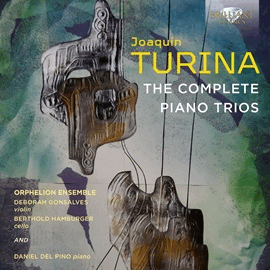Das Symphonieorchester des Bayerischen Rundfunks und sein designierter Chefdirigent Simon Rattle widmeten eines der beiden Konzerte, die dieser Aufnahme zugrunde liegen, dem im Oktober 2021 verstorbenen Dirigenten Bernard Haitink. Es ist eine würdige Hommage an diesen großen Mahler-Dirigenten, und Rattle beweist einmal mehr, welch bedeutender Mahler-Interpret auch er ist.
Gleich im ersten Satz gelingt es ihm, mit großartigem Atem die ganze Mahler-Welt in ihrer packenden Ursprünglichkeit zu zeichnen. Aufbruch und Zusammenbruch stehen immer nahe beieinander, und der aufregende Wechsel zwischen Spannung und Entspannung bleibt die ganze Symphonie hindurch erhalten.
Dabei fehlt es dieser Lesart auch nicht an Sinnlichkeit. Da gibt es sowohl lyrische Schönheit, die voller Abgründigkeit steckt, als auch das unbeschwert (und kunstvoll durchleuchtete) Klang- und Bewegungsspiel. Das dreisätzige Hin und Her der Gefühle führt zum Adagio-Finale, das Rattle in moderatem Tempo nachdenklich und in zutiefst ergreifenden 24 Minuten mit Nostalgie, Trauer und auch einigen Hoffnungsgedanken zum Ersterben bringt.
Das Orchester ist glänzend disponiert und fasziniert sowohl durch differenzierte Farbgebung als durch eine größtmögliche Transparenz. Unter Rattles Leitung verschmelzen Mahler, Orchestermusiker und er zu einem einzigen Instrument.
The Bavarian Radio Symphony Orchestra and its designated principal conductor Simon Rattle dedicated one of the two concerts used for this recording to the conductor Bernard Haitink, who died in October 2021. It is a great tribute to this outstanding Mahler conductor, and Rattle once again proves what a major Mahler interpreter he is as well.
Right in the first movement, he succeeds in drawing the whole Mahler world in its gripping originality with magnificent breath. Rising and collapse are always close together, and the exciting alternation between tension and release is maintained throughout the symphony.
At the same time, this reading is not lacking in sensuality. There is both lyrical beauty, full of abyss, and the light-hearted (and artfully illuminated) play of sound and movement. The three-movement back-and-forth of emotions leads to the Adagio finale, which Rattle conducts thoughtfully and in moderate tempo. The music dies away in a deeply moving 24 minutes with nostalgia, sadness and also some thoughts of hope.
The orchestra is brilliantly disposed and fascinates with both differentiated coloration and the greatest possible transparency. Under Rattle’s direction, Mahler, orchestral musicians and he himself merge into a single instrument.


















